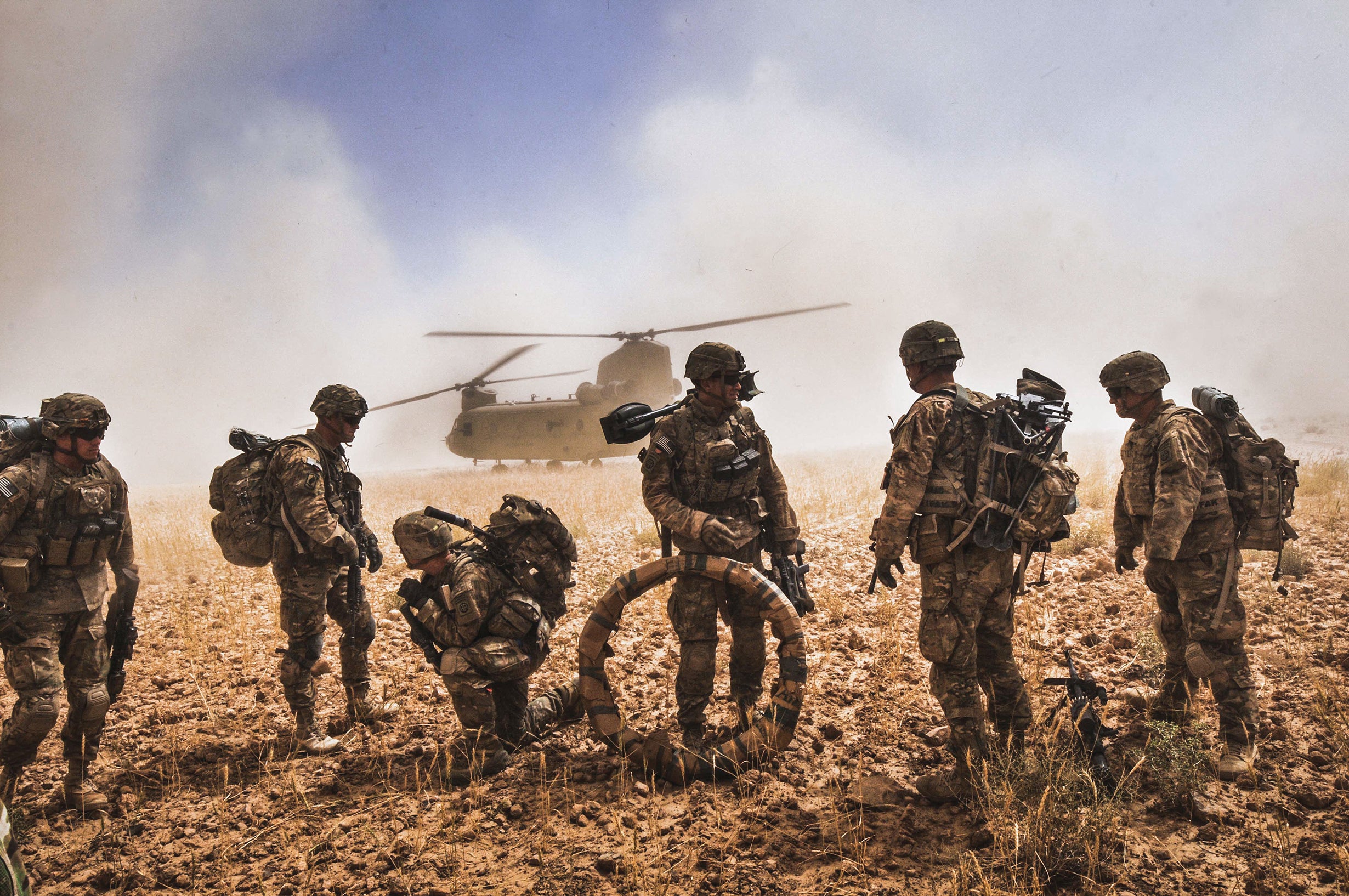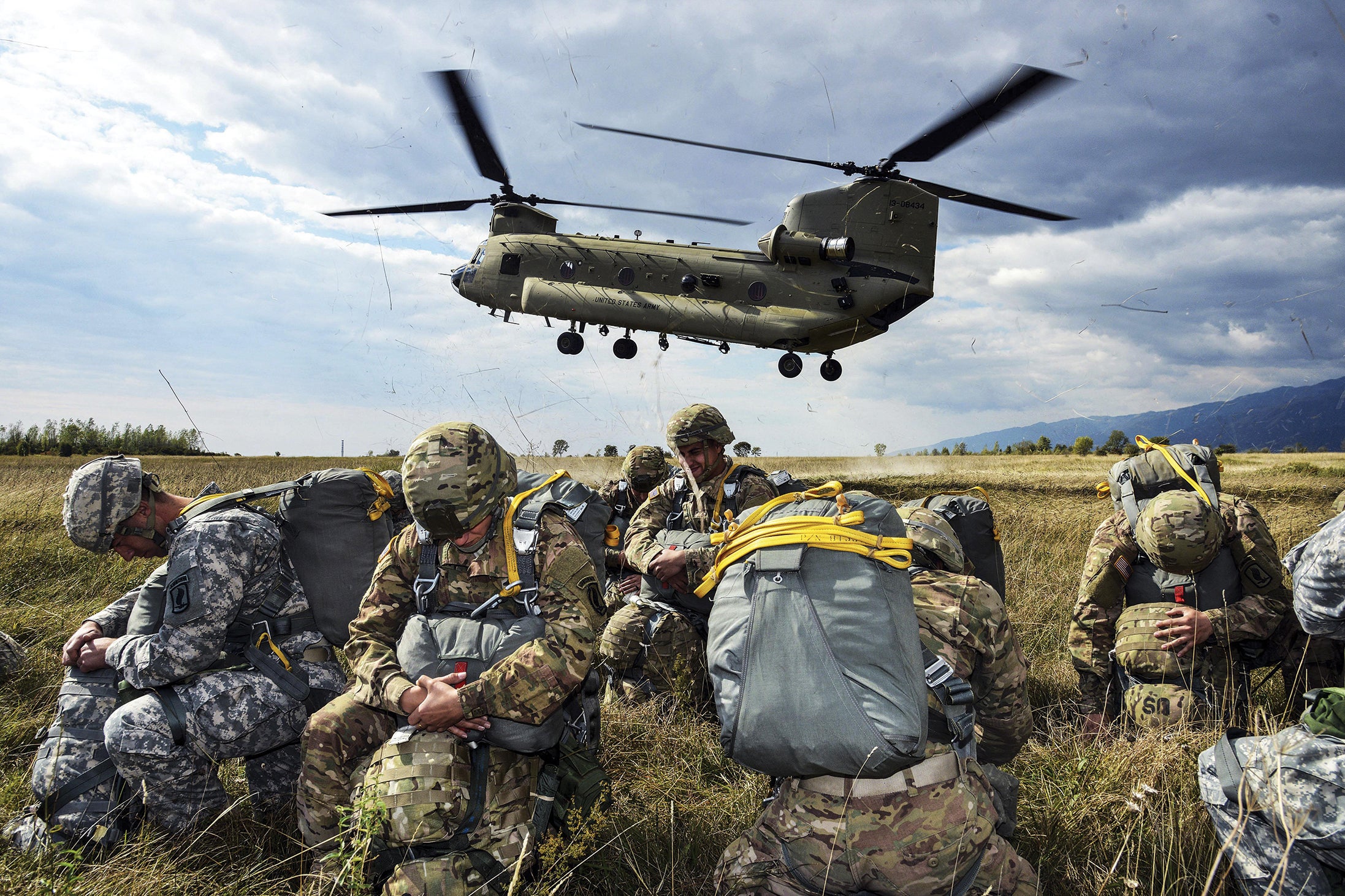How does a new idea become reality? When it comes to the future Army, how does that idea turn into a new vehicle, weapon system or doctrinal change?
It all starts with an idea, or concept. Concepts identify required capabilities. These required capabilities are matched to current or programmed resources. If no resource exists that can match the capability, a gap exists. Processes then take place to fill that gap within the analytical framework known as the Army Warfighting Challenges (AWFCs).
AWFCs are the Army’s enduring first-order problems. Solutions to these challenges will improve the combat effectiveness of the current and future force. The challenges are derived from the required capabilities outlined in the Army Operating Concept: Win in a Complex World. This framework provides the “lens capability” that developers use to get a clearer view of future requirements.
Logical Approaches
Each warfighting challenge has five components. These components represent a logical approach toward understanding the problem posed by each challenge; determining requirements to address the problem; applying analytically based learning to develop solutions; and recommending doctrine, organization, training, materiel, leadership and education, personnel, facilities and policy actions to improve the combat effectiveness of current and future forces. The components are:
- Problem statement: what capabilities are needed and why (threat, missions, technology, historical insights/lessons learned).
- Running estimate: a current estimate of the status of the capabilities needed. Includes the status of current and programmed solutions. Objectives and supporting tasks to mitigate gaps or pursue opportunities are presented.
- Learning demands: Each learning demand identifies the specific knowledge needed, in the form of a question, based on the objective and desired outcome, that helps address the overall AWFC to which it is nested in prioritized order.
- Integrated learning and analysis plan: actions and activities directed at meeting the learning demands, integrated internally within the AWFC lead and across the community of practice.
- Interim solution strategy: measures that mitigate capability shortfalls or advance opportunities until a fully developed solution can be achieved. Interim solution strategies are framed to inform three distinct time horizons: near-term (what we can do now), midterm (program objective memorandum candidates) and far-term (science and technology investment decisions). A key goal is to establish overmatch (differential advantage).
Together, the components contribute to a capabilities-based approach forcing concept developers at the Army centers of excellence to ask questions such as: What must we do? What can’t we do? What are some of the possible interim solutions? What are the trades, risks and opportunities? Should we pursue the interim solution?
These questions provide the necessary analytics to form the recommendations that go before senior leaders who are responsible for key decisions affecting the development of the future force.
Solving Challenges
The capabilities development process begins with a concept in the Army Operating Concept and its required capabilities—what the Army must do. If no resource is matched to the capability, the identified gap is examined and developed into a warfighting challenge. To solve these challenges, the AWFC team creates an integrated learning plan to outline what the Army must learn—learning demands. Learning demands are key questions to guide analysts toward recommendations and possible solutions. The analytical output also will inform an AWFC’s running estimate and the heart of the warfighting challenge and is subject to continuous change and update as the learning evolves. The Army Capabilities Integration Center director and the U.S. Army Training and Doctrine Command’s top general guide a team of senior Army leaders from throughout the community of practice who serve as the “check or hold” mechanism for those near- (today to 2025), mid- (2026 to 2035) and far-term (2036 to 2050) solutions that can go forward for future implementation.
Concepts are always in a state of refinement as the body of knowledge grows. The planning, programing and budgeting process is continuous since programming for the future force is a continuous evolutionary cycle. AWFCs provide the analytical framework to focus required work and prioritize outcomes.
Relevance to the Army
The warfighting challenges’ analytical framework offers a more structured approach to think, learn, analyze and implement the Army’s future force requirements and contribution to the joint force. AWFCs form a strong foundation for our learning activities by providing the framework to conduct the war games and experiments that make up the Force 2025 Maneuvers campaign of learning (Unified Quest and Unified Challenge events). These learning events help identify capability gaps and opportunities to achieve overmatch against present and future threats, enemies and adversaries as well as identify solutions to fill these gaps in the near, mid, and far term. Rigorous analysis through the capabilities-needs analysis process identifies and prioritizes gaps and ensures sound investments in future capabilities that may lead to implementation in the future.
The framework’s effectiveness lies within the power of collaboration. Before the re-emergence of AWFCs, collaboration within the Army’s capability-development community took place within and across functional centers of excellence mainly on an as-needed basis. The framework forces cross-functional collaboration since each warfighting challenge crosses most, if not all, the Army’s functional areas. Since September 2014, the analytical framework has provided the energy behind force modernization and future force-design efforts for the future Army to win in a complex world.
Ensuring future Army forces are prepared requires a focused, sustained and collaborative effort across the institutional Army, the operating force, the joint community, industry, academia, and other interorganizational and multinational partners. As historian Sir Michael Howard observed, “No matter how clearly one thinks, it is impossible to anticipate precisely the character of future conflict. The key is to not be so far off the mark that it becomes impossible to adjust once that character is revealed.”
We cannot afford to discover in 2050 that we took the wrong direction today.
For more information on the Army Warfighting Challenges, go to http://www.arcic.army.mil/Initiatives/ArmyWarfightingChallenges



